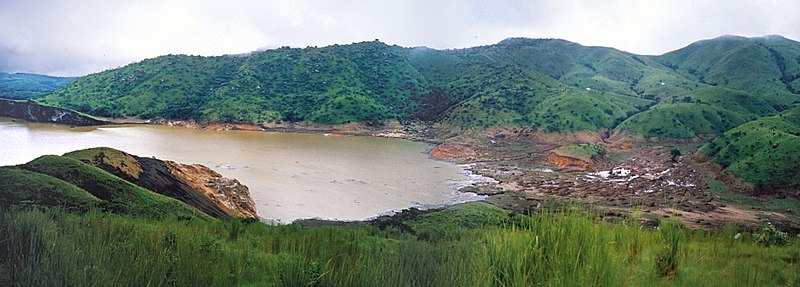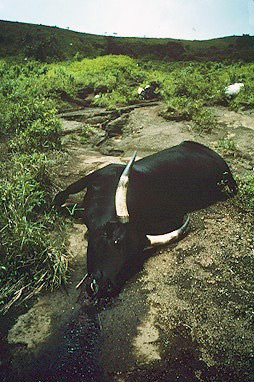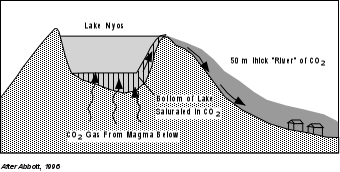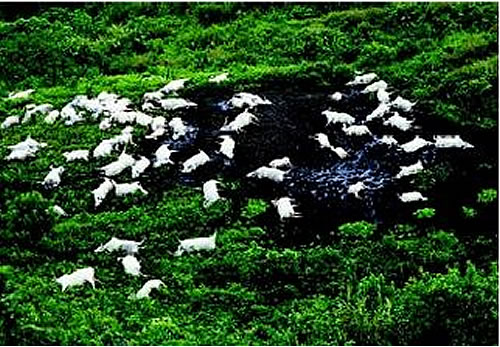
An eruption of lethal gas from Lake Nyos in Cameroon kills nearly 2,000 people and wipes out four villages on this day in 1986. Carbon dioxide, though ubiquitous in Earth's atmosphere, can be deadly in large quantities, as was evident in this disaster.


Lake Nyos and Lake Monoun are both crater lakes about a mile square located in remote mountain areas of northwest Cameroon, dominated by rock cliffs and lush vegetation. In August 1984, 37 people near Lake Monoun died suddenly, but the incident was largely covered up by the government. Since there is no electricity or telephone service in the area, it was not difficult to keep the incident secret and the 5,000 people who lived in villages near Lake Nyos were unaware of the potential danger of their own lake. At about 9:30 p.m. on August 21, a rumbling noise emanated from the lake for 15 to 20 seconds, followed by a cloud of carbon-dioxide and a blast of smelly air. The cloud quickly moved north toward the village of Lower Nyos. Some people tried to run away from the cloud; they were later found dead on the paths leading away from town. A woman and child were the only two survivors of Lower Nyos.


The deadly cloud of gas then moved on to Cha Subum and Fang, where another 500 people lost their lives. The carbon dioxide killed every type of animal--including small insects--in its path, but left buildings and plants unaffected. Reportedly, even survivors experienced coughing fits and vomited blood.


Outsiders learned of the disaster when they approached the villages and found animal and human bodies on the ground. The best estimate is that 1,700 people and thousands of cattle died. A subsequent investigation of the lake showed the water level to be four feet lower than what it had previously been. Apparently, carbon dioxide had been accumulating from underground springs and was being held down by the water in the lake. When the billion cubic yards of gas finally burst out, it traveled low to the ground--it is heavier than air--until it dispersed. Lake Nyos must now be constantly monitored for carbon-dioxide accumulation.





No comments:
Post a Comment